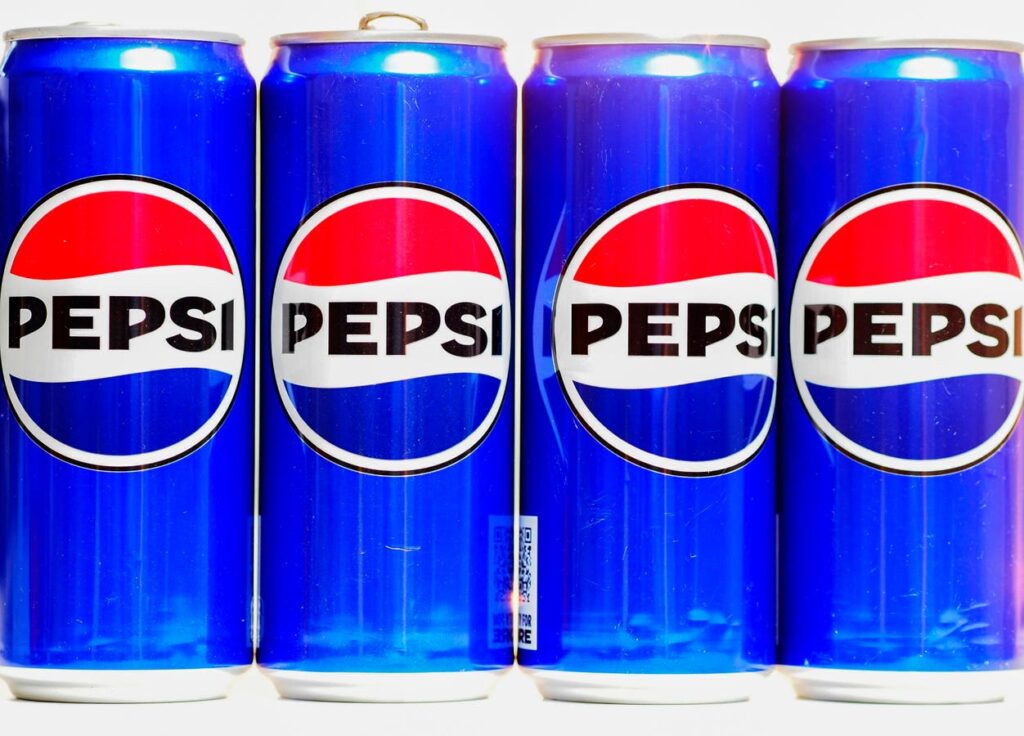PepsiCo (NYSE: PEP) recently published its fiscal first-quarter results, demonstrating a mixed performance relative to Wall Street expectations. The company announced revenues of $17.9 billion, slightly surpassing the expected $17.8 billion, though earnings per share (EPS) of $1.48 fell just short of the $1.49 consensus. These results indicate a 2% year-over-year decline in sales and a drop in earnings of 8%, reflecting a challenging beginning to the fiscal year.
Following this announcement, PepsiCo’s stock saw a 3% decrease on Thursday, April 24th. This drop seems to be partially driven by a less favorable outlook for the rest of the year. While the company anticipates low single-digit organic revenue growth, it has adjusted its earnings forecast downward to flat year-over-year, a notable change from the previously expected mid-single-digit increase.
An in-depth examination of PepsiCo’s organic business performance shows a 2% decline in volume, countered by a 5% rise in pricing. Regionally, the company faced challenges with North American consumer demand but gained from strong international sales growth.
Of course, individual stocks tend to be more volatile than a portfolio – and in the current environment, if you’re looking for upside with reduced volatility compared to a single stock, consider the High-Quality portfolio, which has outperformed the S&P 500 and achieved returns of over 91% since its inception.
Broader Market Concerns and Tariff Implications
Apart from PepsiCo’s specific earnings, the prevailing macroeconomic climate poses considerable challenges. Escalating economic concerns in the United States, worsened by the current administration’s implementation of tariffs, are fostering a negative environment for the broader markets. It is improbable that any major stock, including PepsiCo, will remain completely insulated from these circumstances.
Historical Resilience of PEP Stock During Downturns
Historically, PepsiCo’s stock has shown a certain level of resilience during economic downturns, often outperforming the benchmark S&P 500 index regarding percentage decline. Analyzing recent crises offers important context:
- Inflation Shock (2022): During the inflationary pressures of early 2022, PEP stock experienced a 12.5% decrease, compared to a more substantial 25.4% decline in the S&P 500. Remarkably, the stock made a complete recovery of its losses within a few months.
- COVID-19 Pandemic (2020): The beginning of the pandemic caused a 29.3% decline in PEP stock, less severe than the S&P 500’s 33.9% fall. Again, the stock rebounded to its pre-crisis peak relatively swiftly.
- Global Financial Crisis (2008): The financial crisis resulted in a 42.4% drop in PepsiCo’s stock value, while the S&P 500 encountered a steeper 56.8% decline. This time, the recovery period for PEP stock was longer.
Despite this historical outperformance, the current combination of weak demand and tariff-related uncertainties necessitates careful consideration. PepsiCo’s year-to-date stock decline of 7% already highlights investor concerns.
Key Factors Influencing Future Performance
Several elements contribute to the existing cautious outlook:
- Macroeconomic Headwinds: While inflation concerns have marginally subsided, the current administration’s assertive tariff policies have rekindled worries about potential economic instability.
- Geopolitical Uncertainty: Increased geopolitical instability, including ongoing trade tensions and strained international relations, introduces complexity to the risk landscape. Consumer spending, a vital driver for PepsiCo’s operations, may face adverse effects from further market declines.
- Mixed Performance Metrics: While PepsiCo has seen modest revenue growth (averaging 5% over the past three years) and retains a moderate operating margin of 14%, the latest quarterly outcomes underscore the difficulties of reconciling volume reductions with pricing power in the current landscape. Continued market share advancements for Pepsi Zero Sugar in North America signal a positive note, yet the wider economic context cannot be disregarded.
Potential Downside Risk and Investor Considerations
Considering the 2020 market downturn as a possible reference point, a similar percentage decline (around 30%) from PepsiCo’s previous highs this year might drive the stock below $110.
This invites a crucial question for shareholders of PEP stock: If a significant market downturn brings the stock toward or beneath $110, will you uphold your position or feel compelled to sell? Grasping your risk tolerance amidst potential volatility is vital in the current unpredictable economic atmosphere.
Holding on to a declining stock is not always straightforward. Trefis collaborates with Empirical Asset Management, a Boston-based wealth manager whose asset allocation strategies yielded positive returns even during the 2008/2009 period, when the S&P lost over 40%.
Empirical has integrated the Trefis HQ Portfolio in this asset allocation framework to provide clients better returns with less risk versus the benchmark index; offering a smoother ride, as evidenced by HQ Portfolio performance metrics.
While investors hope for a soft landing for the U.S. economy, how severe could the consequences be if another recession occurs? Review the last six market crashes compared.
Read the full article here


